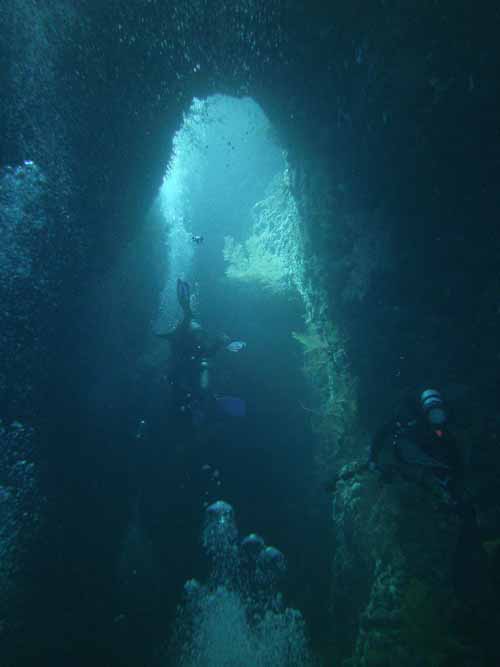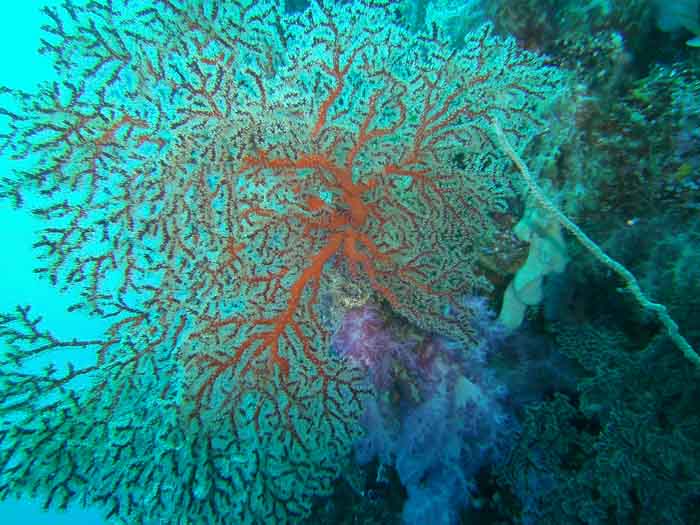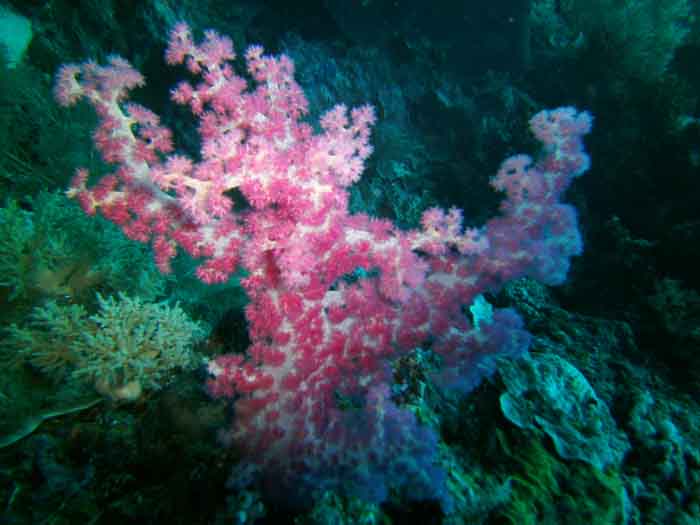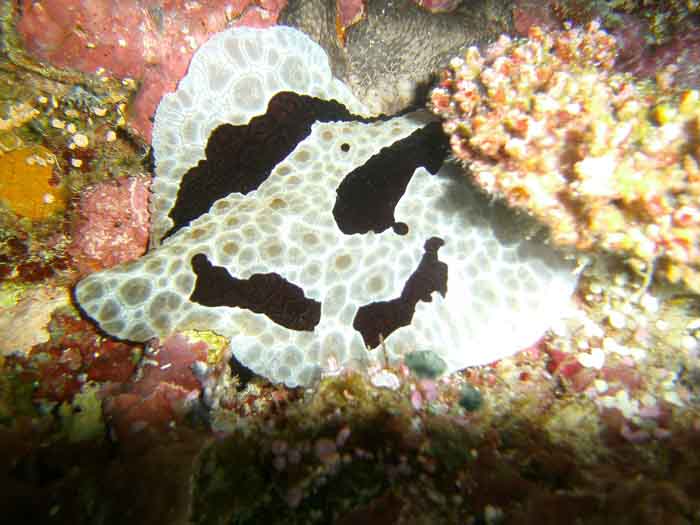First Week Underwater
by wjw on November 11, 2016
This week I’ve been knocked flat by a cold, not to mention by the American election, so I thought I’d try to cheer myself up by posting pretty pictures.
Palau is known for the wild diversity of its dives. You can dive coral walls, caverns, and wrecks. You can get swept along by surging tides, perform “hook-in dives,” where you anchor yourself to the top of a reef being swept by a swift current, and just watch the schools of sharks and other predator fish as they patrol right past your nose. You can make dives to see particular fish do particular things, as I did on the German Channel to see manta rays, or when we dove at dawn to view the mating rituals of the bumphead parrotfish, which only mate on the third day before the new moon, and only when the tide is coming in. (Our guides and divemasters were happy we’d chosen to view this one, because it’s very rare and most of them had never seen it themselves.)
One dive that we could no longer do was at Jellyfish Lake, where in 2002 I had a strangely blissful dive in a marine lake filled with 10,000,000 throbbing jellyfish. You can’t make that dive anymore, because rising temperatures wiped the jellyfish out, all 10,000,000 of them. We may hope that things may cool down.
I was on the Palau Aggressor, a live-aboard dive boat where the motto is “Eat, Sleep, Dive.” (They don’t mention Drink, but you can only do that after the last dive.) I’ve dived elsewhere with the Aggressor Fleet, and the Palau boat was a bit smaller than the others, with less elbow room. Because it’s dangerous to shift the boat over an area so filled with growing reefs, the Aggressor would anchor in a safe area, while we went out on a skiff to the actual dive site. We’d roll backward off the boat, do our dive, then climb back aboard the skiff for transport to the Aggressor, where there would be a snack or meal waiting. (We ate extremely well, with Chef Ronnie Aya-ay turning out BBQ ribs, grilled steak, grilled tuna, chicken parmesan, pork tenderloin, and roast turkey with all the trimmin’s, not to mention croissants, apple strudel, and other baked goods for snacks.)

Caverns. Palau is composed of coral limestone islands, which means they’re susceptible to forming tunnels, caves, domes, fissures, sinkholes, and other geological features. This photo was taken at Siaes Tunnel. Some of the divers didn’t want to go inside, I think because of the claustrophobic and misleading name— it should be called Siaes Cavern, because it’s an enormous underwater cave with three entrances, all in sight of one another, so you can’t get lost. (All of the caves we dove were open and perfectly safe, impossible to get lost it.) Siaes Tunnel is a little deeper than most, and exits at 110 feet, which is the limit for those of us using 32% Nitrox. As convulsions and death are not my thing, I kept a good watch on my depth gauge.
 Corals. Palau’s walls were filled with beautiful corals, such as the hard-coral fan above, and the soft coral below.
Corals. Palau’s walls were filled with beautiful corals, such as the hard-coral fan above, and the soft coral below.
 Soft corals are particularly to be found in areas swept by current, and that pretty well describes Palau, with the Philippine Sea and the Pacific Ocean muscling each other for local superiority.
Soft corals are particularly to be found in areas swept by current, and that pretty well describes Palau, with the Philippine Sea and the Pacific Ocean muscling each other for local superiority.
 Critters. This critter was the size of a dinner plate, and is either a nudibranch or some near-relative of a nudibranch, I don’t remember which. Among the odder denizens of the reef, we also saw octopus, cuttlefish, various kinds of shrimp and crab, lobster, eels, starfish, and more nudibranchs.
Critters. This critter was the size of a dinner plate, and is either a nudibranch or some near-relative of a nudibranch, I don’t remember which. Among the odder denizens of the reef, we also saw octopus, cuttlefish, various kinds of shrimp and crab, lobster, eels, starfish, and more nudibranchs.
I did 25 dives in Palau, which were all that were on offer, and again won the Iron Diver award. (If I’m going to travel 22 hours to a place, I’m going to see as much of it as I can.)
Because United Airlines offers something close to a monopoly on travel in that part of the world, we flew out at 1:45 am on a Monday, heading for Chuuk via Guam.
For Chuuk, I’ll have to make another post.

 Corals. Palau’s walls were filled with beautiful corals, such as the hard-coral fan above, and the soft coral below.
Corals. Palau’s walls were filled with beautiful corals, such as the hard-coral fan above, and the soft coral below. Soft corals are particularly to be found in areas swept by current, and that pretty well describes Palau, with the Philippine Sea and the Pacific Ocean muscling each other for local superiority.
Soft corals are particularly to be found in areas swept by current, and that pretty well describes Palau, with the Philippine Sea and the Pacific Ocean muscling each other for local superiority. Critters. This critter was the size of a dinner plate, and is either a nudibranch or some near-relative of a nudibranch, I don’t remember which. Among the odder denizens of the reef, we also saw octopus, cuttlefish, various kinds of shrimp and crab, lobster, eels, starfish, and more nudibranchs.
Critters. This critter was the size of a dinner plate, and is either a nudibranch or some near-relative of a nudibranch, I don’t remember which. Among the odder denizens of the reef, we also saw octopus, cuttlefish, various kinds of shrimp and crab, lobster, eels, starfish, and more nudibranchs.
Great pictures! Planning my PADI Open Water training this winter. Fingers crossed.
Yes, definitely pretty pictures. I’ll have to poke around in your old blog posts to see if I can figure out what camera you are using. Sorry to hear about the cold, but riding around in an airplane is a good way to catch one, unfortunately.
I was using a SeaLife, which I’m not sure I’d recommend. It’s basically a pocket camera in a waterproof box, though it has the advantage of being designed for underwater use. It’s something like $399, and can’t compare with the $12,000 cameras some of my group were lugging around. Still, I think there are better things on the market these days.
One of the fellows in my party had a really beautiful-looking tiny Olympus in a very large waterproof box, which did great stills and video.
Chris, you’ll have a great time!
Gorgeous shots, wjw. A nice remedy for the election.
Comments on this entry are closed.